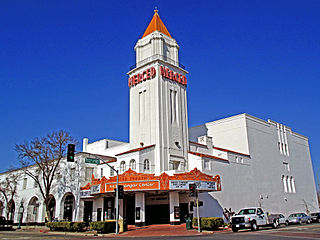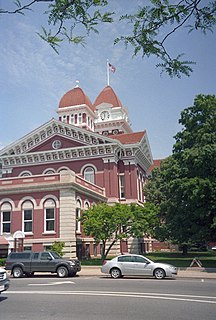
Heber Jeddy Grant was an American religious leader who served as the seventh president of The Church of Jesus Christ of Latter-day Saints. Grant worked as a bookkeeper and a cashier, then was called to be an LDS apostle on October 16, 1882, at age 25. After the death of Joseph F. Smith in late 1918, Grant served as LDS church president until his death.
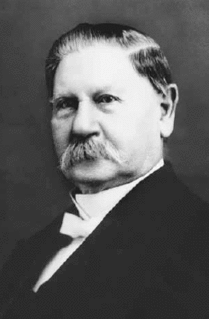
Charles William Penrose was a member of the Quorum of the Twelve Apostles of The Church of Jesus Christ of Latter-day Saints from 1904 to 1911. Penrose was also a member of the First Presidency, serving as a counselor to church presidents Joseph F. Smith and Heber J. Grant from 1911 until his death.
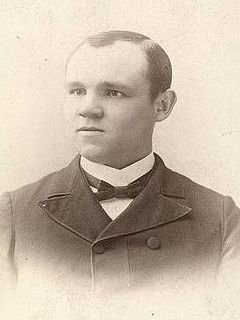
James Edward Talmage was an English chemist, geologist, and religious leader who served as a member of the Quorum of the Twelve Apostles of The Church of Jesus Christ of Latter-day Saints from 1911 until his death.

Mahonri Mackintosh Young was an American sculptor and artist. Although he lived most of his life in New York City, two of his works, the This Is The Place Monument and the Seagull Monument are featured prominently in Salt Lake City, Utah. Mahonri was the grandson of the second President of The Church of Jesus Christ of Latter-day Saints and first Governor of Utah, Brigham Young.

William Wadsworth Hodkinson, known more commonly as W. W. Hodkinson, was born in Pueblo, Colorado. Known as The Man Who Invented Hollywood, he opened one of the first movie theaters in Ogden, Utah in 1907 and within just a few years changed the way movies were produced, distributed, and exhibited. He became a leading West Coast film distributor in the early days of motion pictures and in 1912 he founded and became president of the first nationwide film distributor, Paramount Pictures Corporation. Hodkinson was also responsible for doodling the mountain that became the Paramount logo in 1914. He left the motion picture business in 1929 to form Hodkinson Aviation Corporation, and later formed the Central American Aviation Corporation and Companía Nacional de Aviación in Guatemala.
Smith's Food & Drug Centers, Inc. was founded in 1911 in Brigham City, Utah, United States by Lorenzo J. Smith. Now a subsidiary of The Kroger Company, it is a prominent regional supermarket chain operating in the Southwest and Northwest. After completing a merger with Portland-based Fred Meyer in 1997, Fred Meyer was in turn acquired by Cincinnati-based Kroger in 1999, making Kroger the largest supermarket chain in the United States. Smith's headquarters are in Salt Lake City.

Ellis Reynolds Shipp MD FAAP was one of the first female doctors in Utah and west of the Mississippi. She founded the School of Nursing and Obstetrics in 1879, and was on the board of the Deseret Hospital Association. Shipp successfully combined motherhood and a medical practice, saying, "It is to me the crowning joy of a woman’s life to be a mother." In her 50-year medical career, she delivered more than 5000 babies, and led the School of Nursing and Obstetrics to train more than 500 women as licensed midwives.

William James Critchlow Jr. was a general authority of The Church of Jesus Christ of Latter-day Saints from 1958 until his death.
The Utah Central Railroad was the first railroad in the U.S. state of Utah other than the main line of the First Transcontinental Railroad. Built by Mormons, it connected Salt Lake City to the transcontinental line at Ogden. It has since become part of the Union Pacific Railroad, which operates the line as the Salt Lake Subdivision; FrontRunner commuter rail tracks were added alongside the UP freight line in 2008.
Fred Lewis Markham was an American architect in the early 20th century who designed movie theatres and many buildings on the campus of Brigham Young University (BYU) in Provo, Utah.

Lorin Farr was a Mormon pioneer and the first mayor of Ogden, Utah.
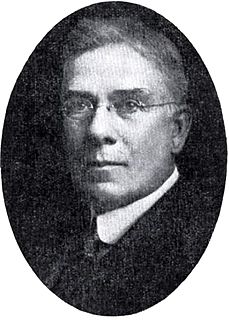
Franklin Snyder Richards was the general counsel for The Church of Jesus Christ of Latter-day Saints in the late 19th century and early 20th century. He was closely connected with the defense against charges of polygamy of many leading LDS Church figures.

Clayton Tryon Teetzel was an American athlete and athletic coach. He played American football and competed in track for the University of Michigan from 1897 to 1899 and later coached football, basketball and track at Michigan State Normal College, Benton Harbor High School, Brigham Young University, and Utah State University.
John Willard "Will" Clawson was an American, Utah-based artist, in the late-19th and early 20th-century.
Leslie Simmons Hodgson was an architect in the Weber County, Utah, United States area from about 1906 to 1947.
Richard Charles Watkins, an immigrant from Bristol, England, was an American architect throughout the intermountain west in the late 19th and early 20th centuries. In his early career he interned with Richard K.A. Kletting in Salt Lake City. In 1890 he came to Provo, Utah as a construction supervisor, and opened his own firm in 1892. When he left nearly 20 years later he had become the most prominent architect south of Salt Lake City, Utah. His works include designing over 240 schools in the intermountain west of the United States including. He served as the architect for Utah State Schools between 1912 and 1920. He also designed businesses, courthouses, eight Carnegie libraries, churches and homes. A number of his buildings survive and are listed on the U.S. National Register of Historic Places.

Jimmy Reagan was an American boxer who claimed the World Bantamweight Championship in a twelve-round bout on January 29, 1909 against Jimmy Walsh at Dreamland Rink in San Francisco, California. He lost the title only a month later in an historic twenty round bout on February 22, 1909 to Monte Attell at the Mission Street Arena in San Francisco. Reagan's primary manager was Jack Davis. During his career he fought Battling Nelson, Peanuts Sinclair, future lightweight champion Willie Ritchie, World Feather and Lightweight contender "Mexican Joe" Rivers and reigning lightweight champion Benny Leonard.

Margaret Ann Nightingale Caine was the first president of the Utah Women Suffrage Association, a secretary of Salt Lake Stake Relief Society, and the elected auditor of Salt Lake County, Utah from 1897-1898.
The 1932 BYU Cougars football team was an American football team that represented Brigham Young University in the Rocky Mountain Conference (RMC) during the 1932 college football season. In their fifth season under head coach G. Ott Romney, the Cougars compiled an 8–1 record, finished second in the RMC, and outscored opponents by a total of 188 to 50. The team's only loss was to rival Utah.







